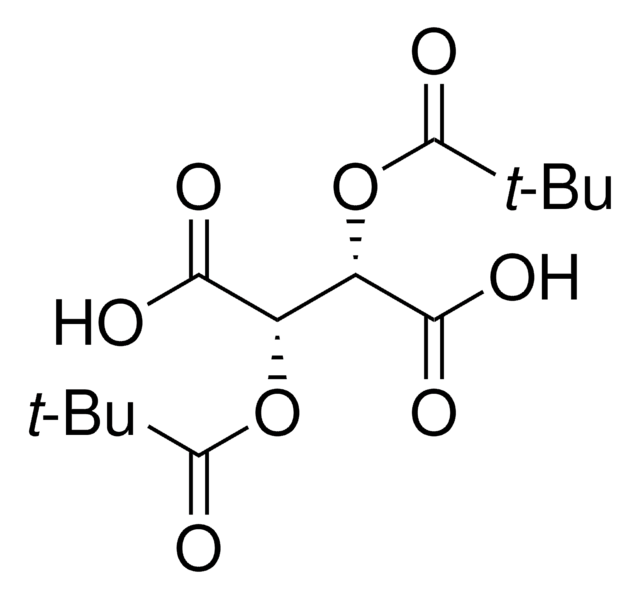67372
Melting point standard 283-286°C
analytical standard
Sinónimos:
Anthraquinone
About This Item
Productos recomendados
grado
analytical standard
Nivel de calidad
densidad de vapor
7.16 (vs air)
presión de vapor
1 mmHg ( 190 °C)
caducidad
limited shelf life, expiry date on the label
bp
379-381 °C (lit.)
mp
283-286 °C (±0.3°C)
284-286 °C (lit.)
aplicaciones
food and beverages
pharmaceutical
Formato
neat
cadena SMILES
O=C1c2ccccc2C(=O)c3ccccc13
InChI
1S/C14H8O2/c15-13-9-5-1-2-6-10(9)14(16)12-8-4-3-7-11(12)13/h1-8H
Clave InChI
RZVHIXYEVGDQDX-UHFFFAOYSA-N
¿Está buscando productos similares? Visita Guía de comparación de productos
Descripción general
The mp value is recorded as an average of 6 to 12 measurements with a Büchi B-545 equipment that is calibrated against primary standards. Melting point is determined by Capillary method, as described in Ph. Eur. 2.2.14.
Aplicación
This product also features as a reference standard in thermal property investigations.
Características y beneficios
- Melting point calibration standard traceable to primary standards (LGC, London)
- Grade: Analytical Standard
- Melting point validated in the thermodynamic mode of analysis
- Standard deviation up to ± 0.3 °C
- Available with certificates of analysis and safety data sheet
Palabra de señalización
Danger
Frases de peligro
Consejos de prudencia
Clasificaciones de peligro
Carc. 1B - Skin Sens. 1
Código de clase de almacenamiento
6.1C - Combustible acute toxic Cat.3 / toxic compounds or compounds which causing chronic effects
Clase de riesgo para el agua (WGK)
WGK 1
Punto de inflamabilidad (°F)
482.0 °F - closed cup
Punto de inflamabilidad (°C)
250 °C - closed cup
Equipo de protección personal
dust mask type N95 (US), Eyeshields, Faceshields, Gloves
Elija entre una de las versiones más recientes:
Certificados de análisis (COA)
Lo sentimos, en este momento no disponemos de COAs para este producto en línea.
Si necesita más asistencia, póngase en contacto con Atención al cliente
¿Ya tiene este producto?
Encuentre la documentación para los productos que ha comprado recientemente en la Biblioteca de documentos.
Los clientes también vieron
Nuestro equipo de científicos tiene experiencia en todas las áreas de investigación: Ciencias de la vida, Ciencia de los materiales, Síntesis química, Cromatografía, Analítica y muchas otras.
Póngase en contacto con el Servicio técnico











